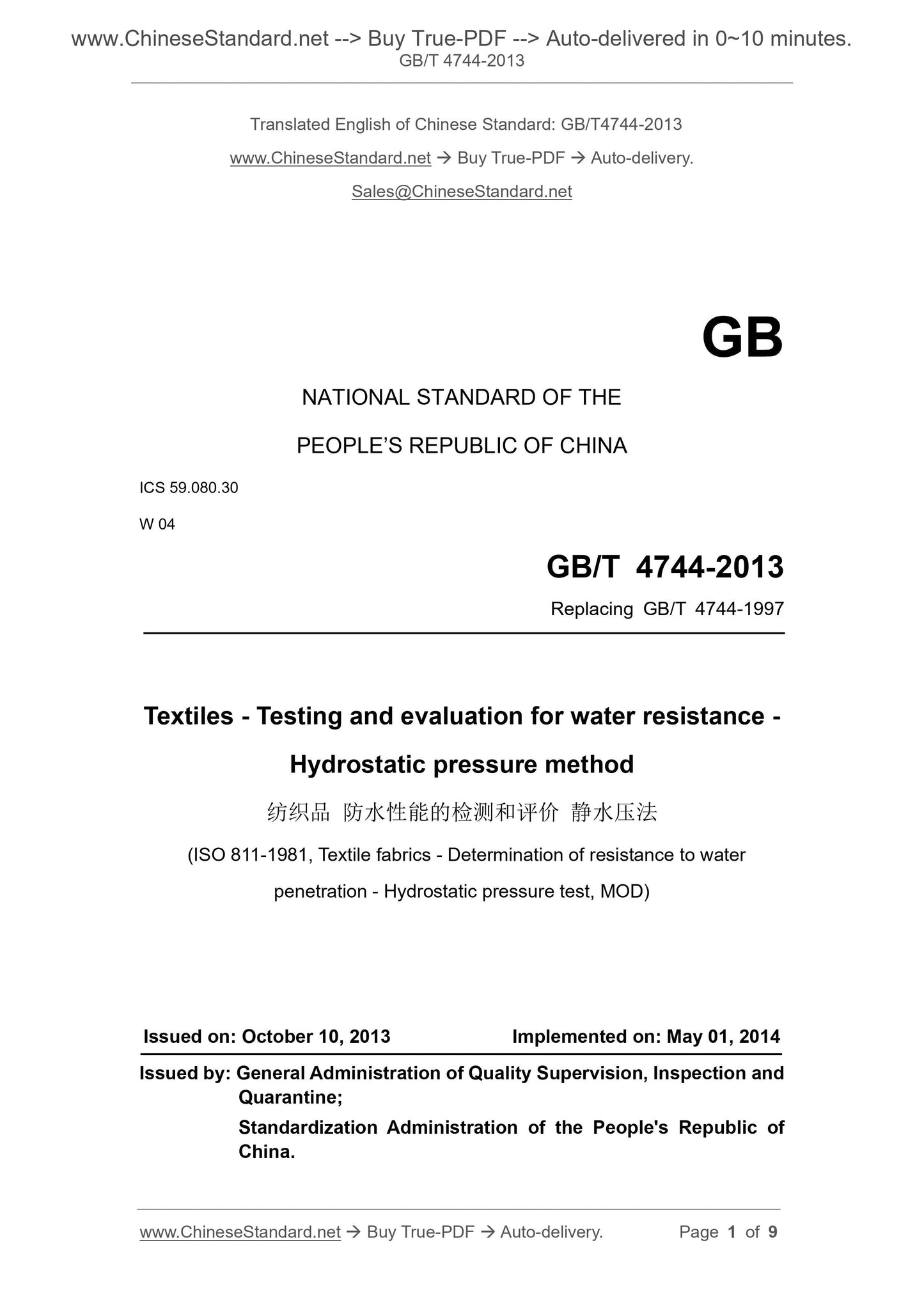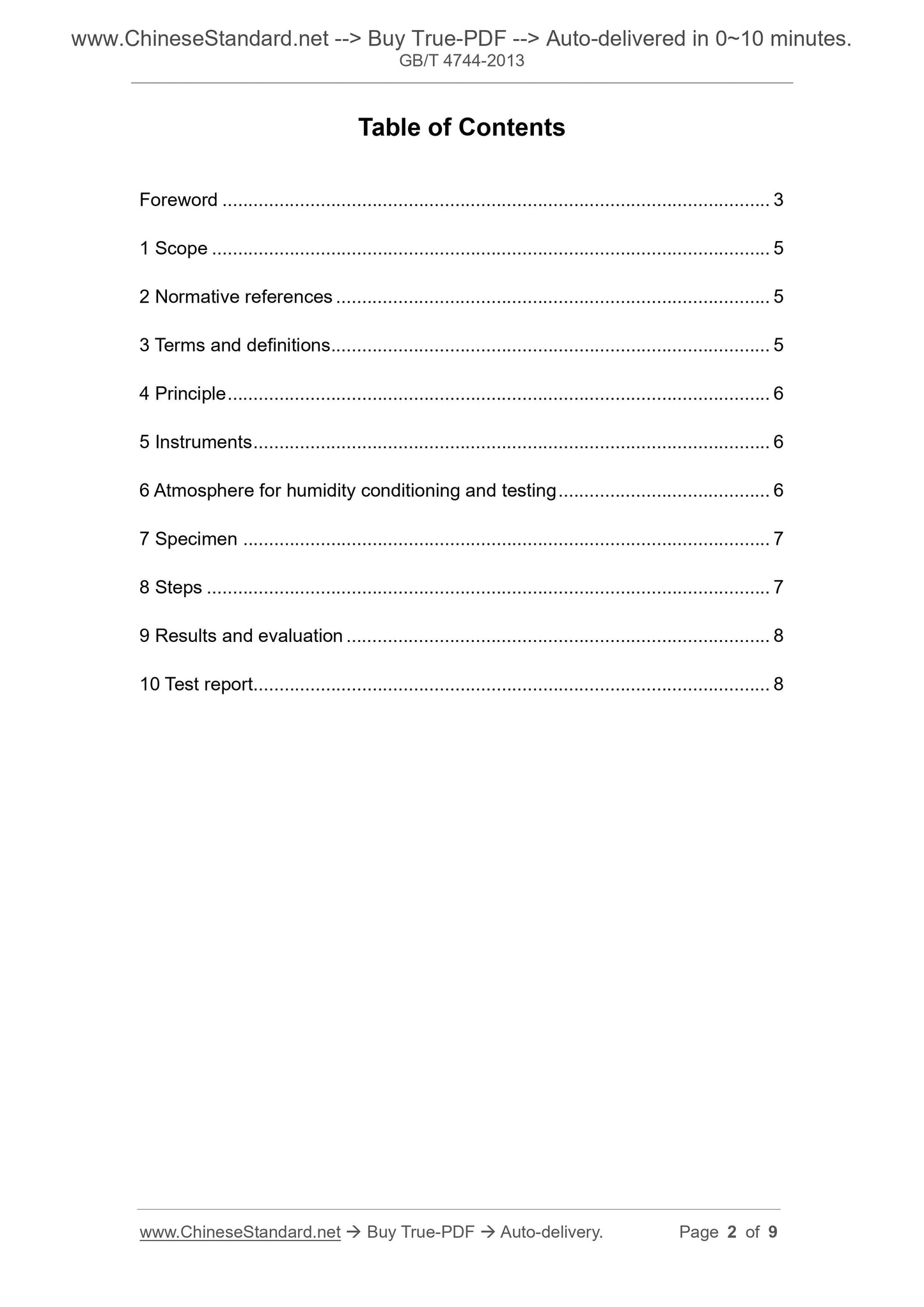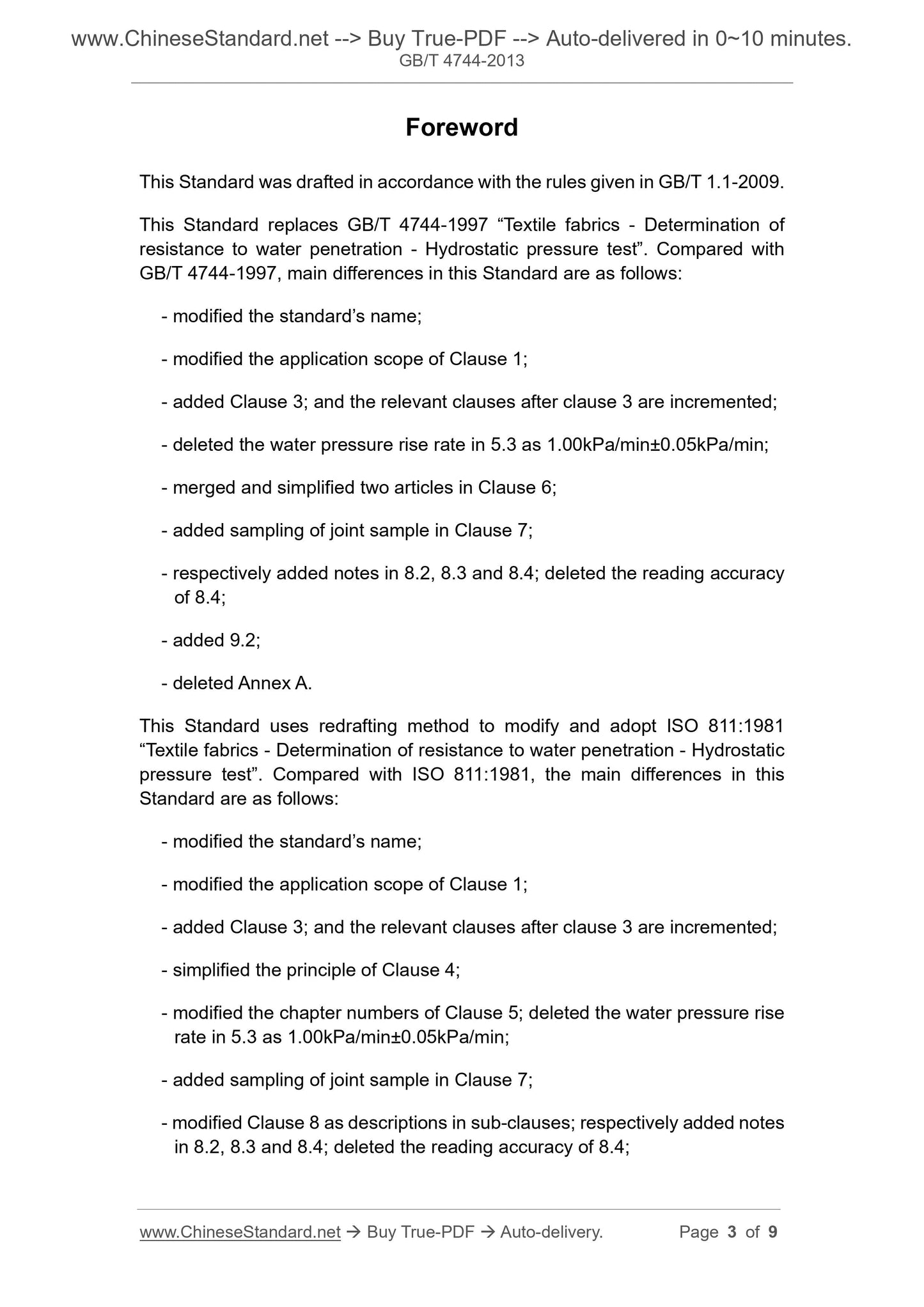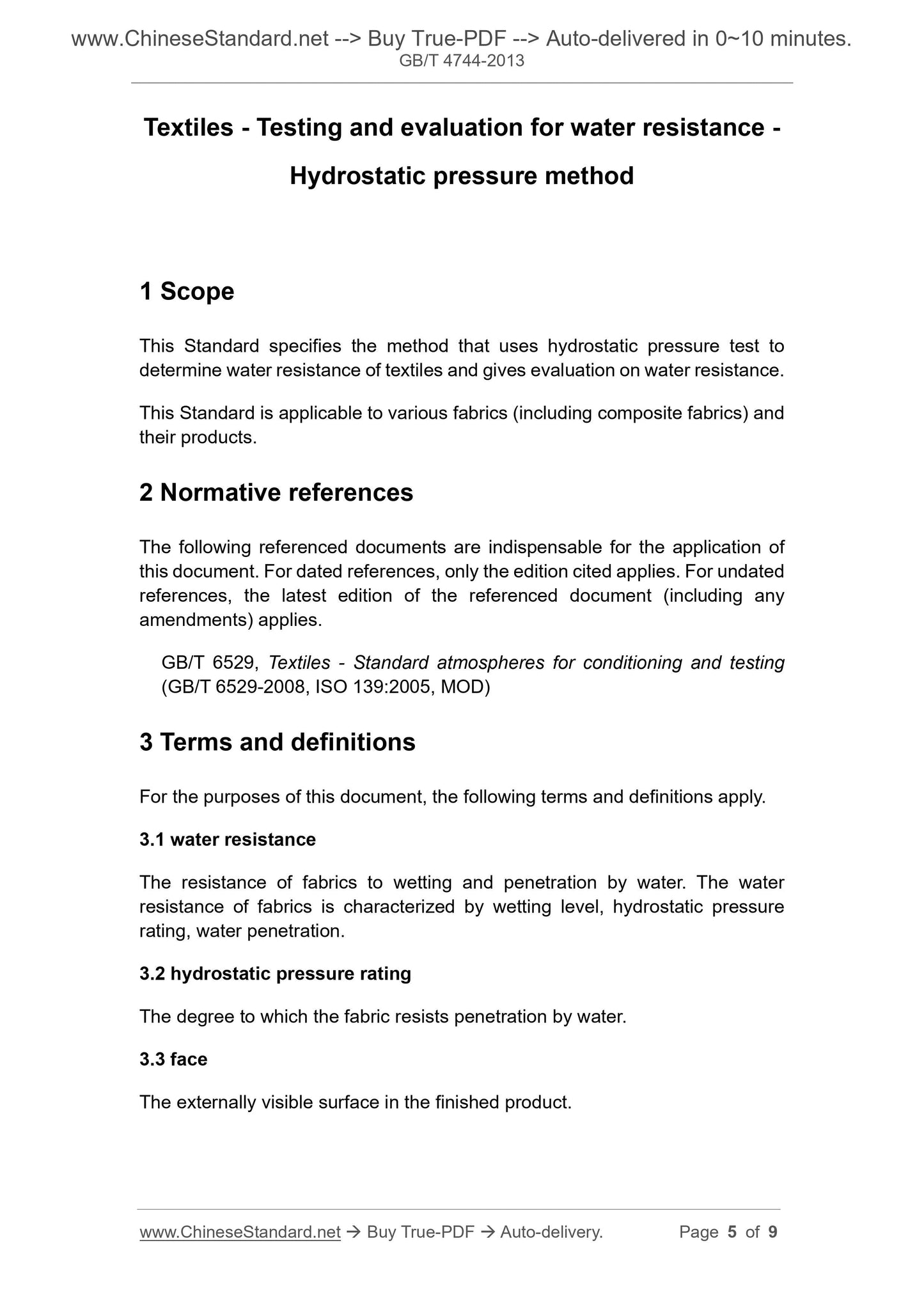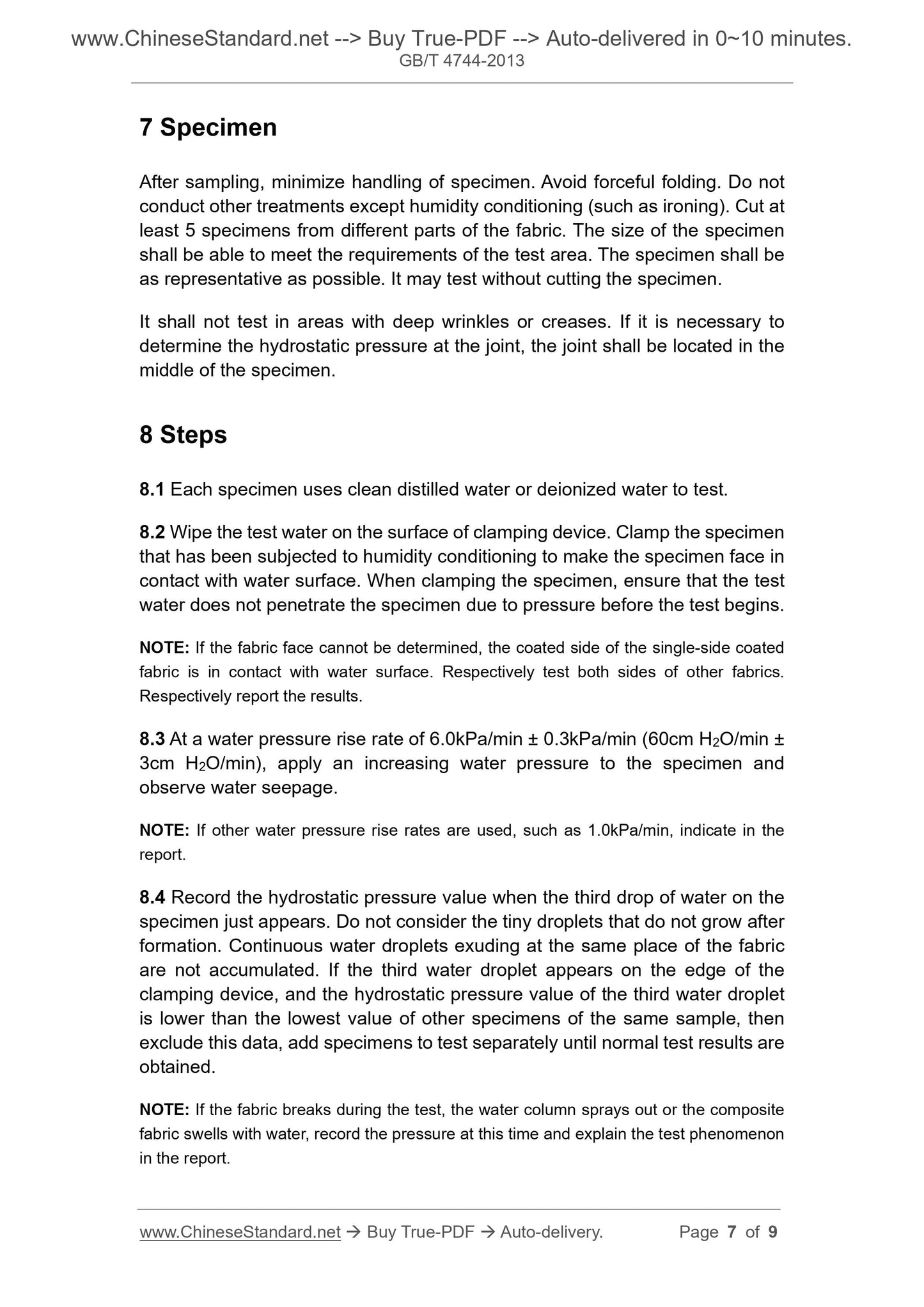1
/
of
5
www.ChineseStandard.us -- Field Test Asia Pte. Ltd.
GB/T 4744-2013 English PDF (GB/T4744-2013)
GB/T 4744-2013 English PDF (GB/T4744-2013)
Regular price
$70.00
Regular price
Sale price
$70.00
Unit price
/
per
Shipping calculated at checkout.
Couldn't load pickup availability
GB/T 4744-2013: Textiles -- Testing and evaluation for water resistance -- Hydrostatic pressure method
Delivery: 9 seconds. Download (and Email) true-PDF + Invoice.Get Quotation: Click GB/T 4744-2013 (Self-service in 1-minute)
Newer / historical versions: GB/T 4744-2013
Preview True-PDF
Scope
This Standard specifies the method that uses hydrostatic pressure test todetermine water resistance of textiles and gives evaluation on water resistance.
This Standard is applicable to various fabrics (including composite fabrics) and
their products.
Basic Data
| Standard ID | GB/T 4744-2013 (GB/T4744-2013) |
| Description (Translated English) | Textiles -- Testing and evaluation for water resistance -- Hydrostatic pressure method |
| Sector / Industry | National Standard (Recommended) |
| Classification of Chinese Standard | W04 |
| Classification of International Standard | 59.080.30 |
| Word Count Estimation | 6,662 |
| Older Standard (superseded by this standard) | GB/T 4744-1997 |
| Quoted Standard | GB/T 6529 |
| Adopted Standard | ISO 811-1981; MOD |
| Regulation (derived from) | National Standards Bulletin No. 21 of 2013 |
| Issuing agency(ies) | General Administration of Quality Supervision, Inspection and Quarantine of the People's Republic of China, Standardization Administration of the People's Republic of China |
| Summary | This standard specifies: Determination of fabric using hydrostatic test water resistance Method, and gives the waterproof performance evaluation. This standard applies to: all kinds of fabrics (including composite fabric) and its products. |
Share
